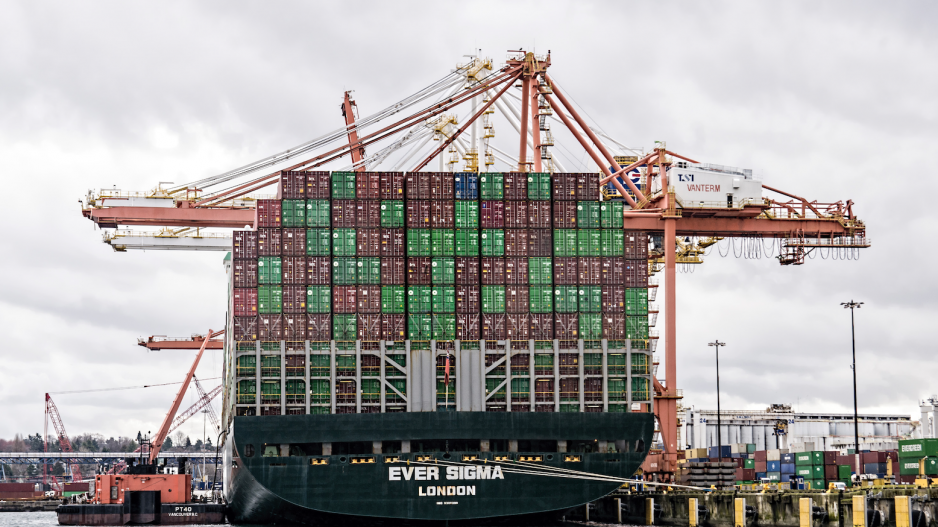Canada’s largest port is struggling to acquire the land it needs to support trade, a growing population and economic activity.
By CBRE’s estimate, the Port of Vancouver needs 607 hectares (1,500 acres) of land over the next decade – space the Metro Vancouver region simply does not have.
The port authority's approach to its land shortage issue focuses on four pillars: Advocacy, optimizing existing land uses, creating land and acquiring land, according to Jennifer Natland, vice-president of real estate at the Vancouver Fraser Port Authority.
When it comes to creating land, or infill, the recently completed Centerm Expansion Project grew the Centerm container terminal by 15 per cent. This in turn increased the port’s capacity by 65 per cent.
Another notable expansion project is the $3.5 billion Robert’s Terminal 2, which recently received federal approval after roughly a decade of community engagement, environmental surveys, roundtables and adjustments to the plan.
The port represents Canada’s gateway to over 170 trading economies around the world and handles $1 of every $3 of Canada’s trade in goods outside of North America, according to the port authority’s website.
A total of 141.4 million metric tonnes (MMT) of goods moved through Port of Vancouver terminals in 2022, compared to 146.5 MMT in 2021, representing a year-over-year decrease of approximately 3.5 per cent.
“If the province was to look at how big of an economic driver the port is to the province and to Metro Vancouver as far as jobs and revenues, they would see that by [the port] being limited in growth, how dramatic of an impact that would have on tax dollars and the many things that we import and export,” said Chris MacCauley, executive vice-president at CBRE.
If solutions aren’t found to mitigate inefficiencies as a result of land shortages, the economic impact will be “massive,” he said.
In the agenda for a 2019 meeting of the Metro Vancouver regional district industrial lands strategy task force, concerns were raised over how land availability issues might impact the port: “The Port of Vancouver has noted that, despite significant improvements to site intensification and optimization in recent years, it may be unable to accommodate future trade demand given its current land supply. As the port approaches its capacity, it risks losing business to other ports along the western coast,” the document states.
Costs are already being added to end users as a result of products flowing to Calgary for processing and sorting, only to be returned to Vancouver for distribution, said Dave Earle, president and CEO of the BC Trucking Association.
He said the clearest example of this is Home Depot Inc. moving its distribution centre to Calgary.
Natland said that while Metro Vancouver has been losing major retailers to other markets like Calgary for years now, this trend “seems to be picking up.”
If businesses choose to relocate to Alberta, Metro Vancouver’s task force has noted that the impact on Canada would be neutral, but negative for the region.
“We as a country, as a province, as an industry have not been talking about focusing on the costs and the competitiveness of our gateway, we just haven't. We've had other fish to fry. We've had COVID-19 and we've had the floods,” Earle said.
“Unequivocally, there's a cost impact, there's a greenhouse gas impact, an infrastructure impact and there's a congestion impact.”
This article is second in a two-part series on industrial land. Read the first part of this story here.




